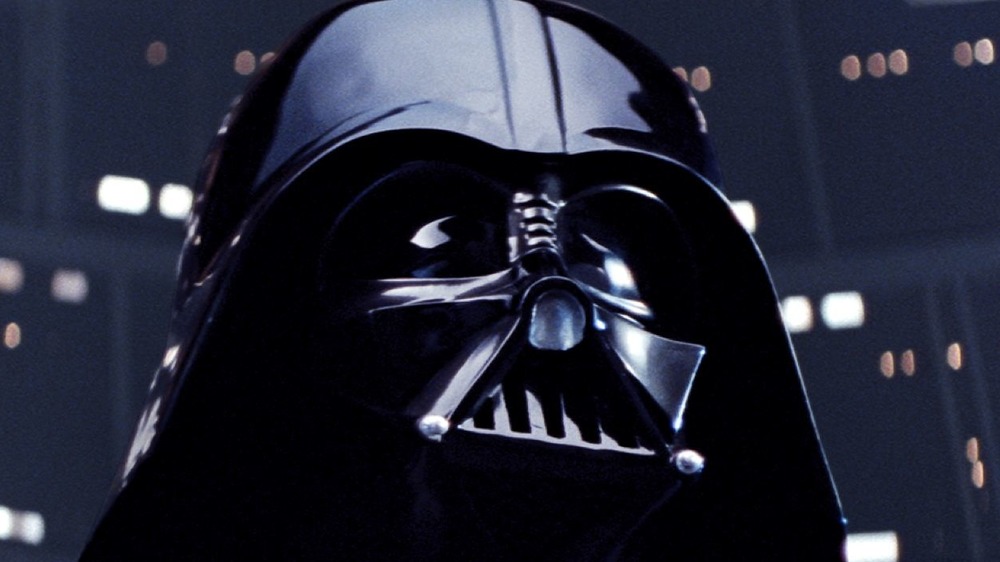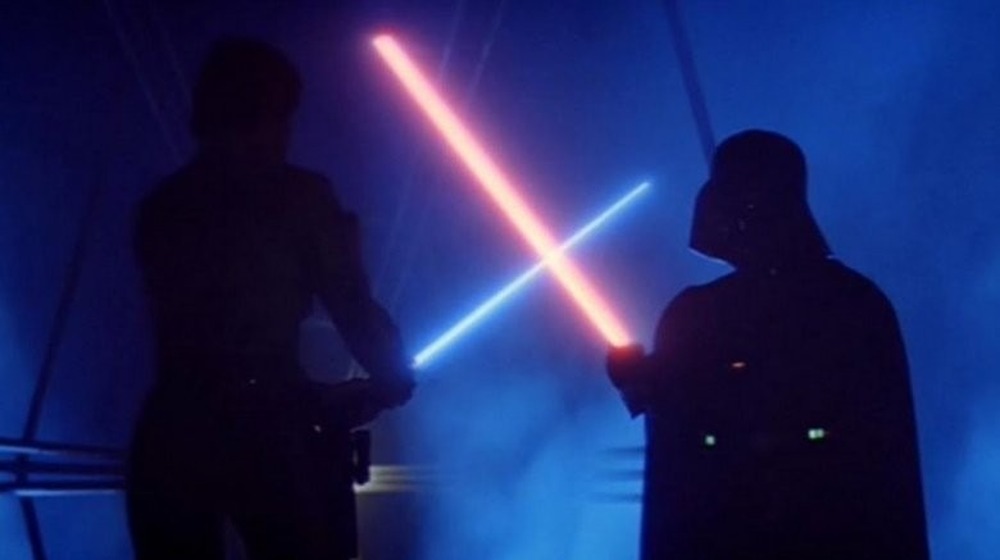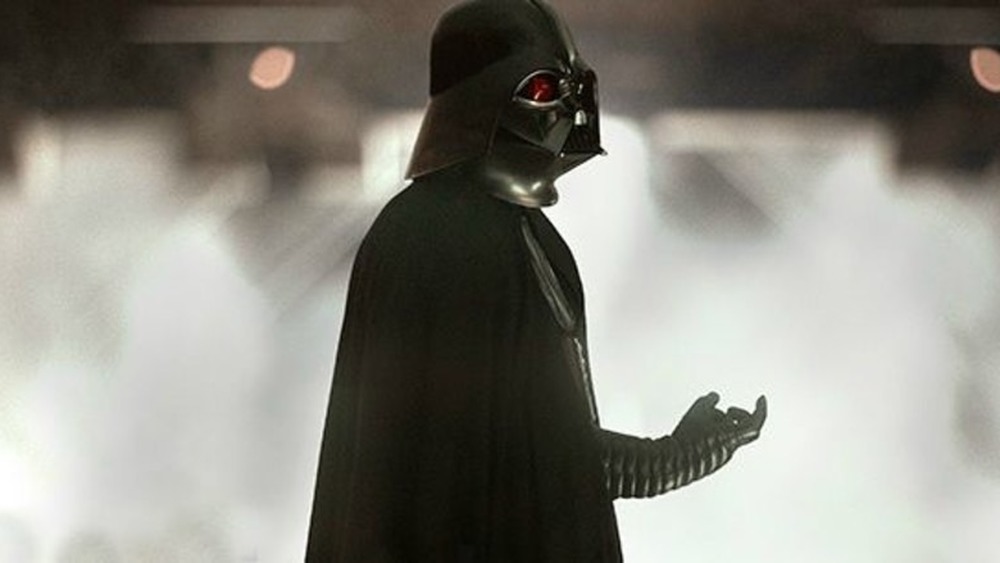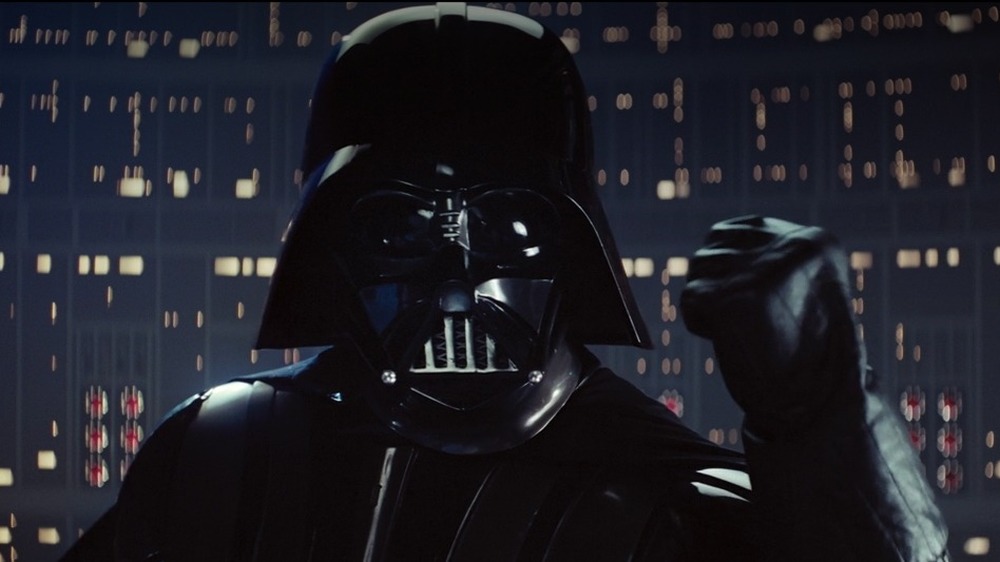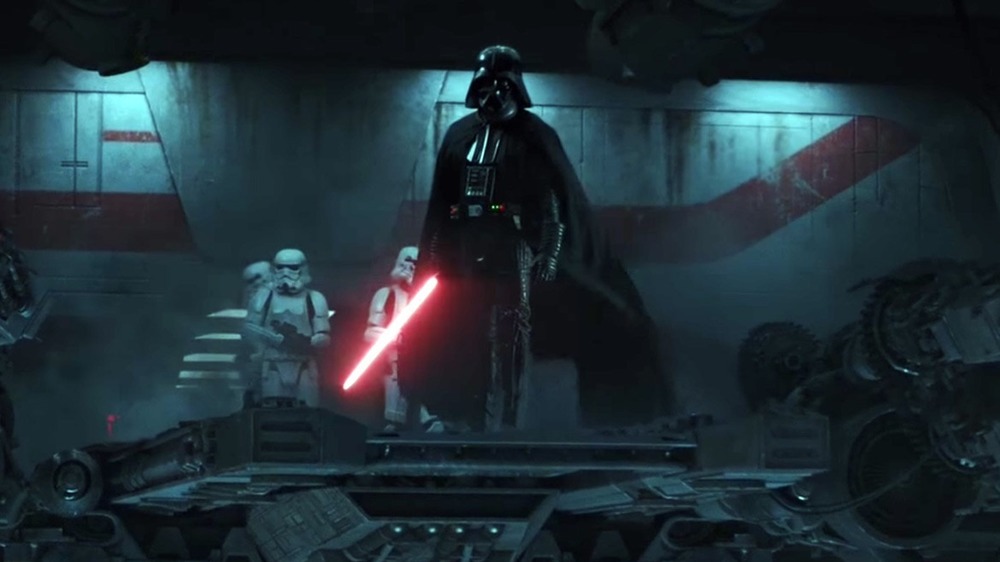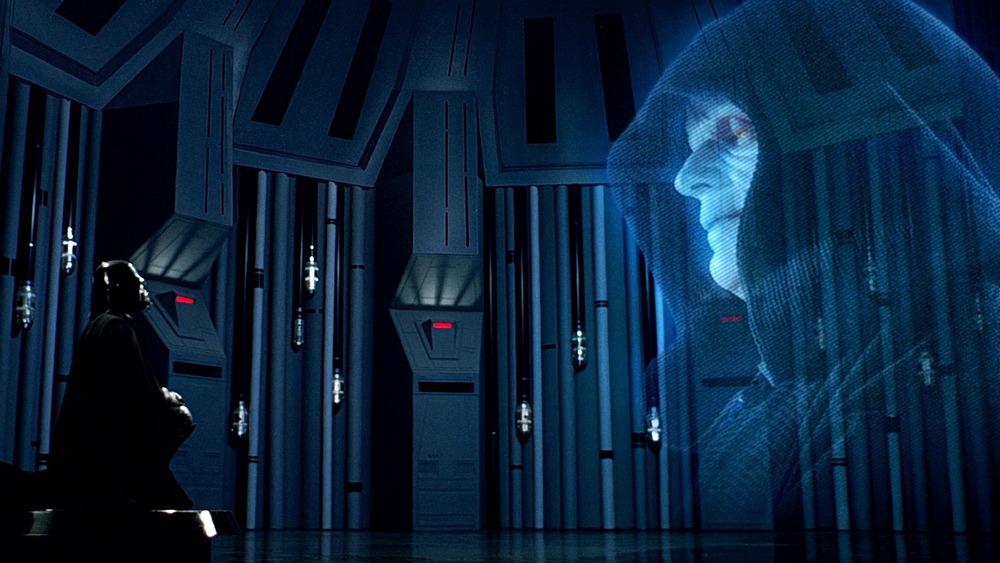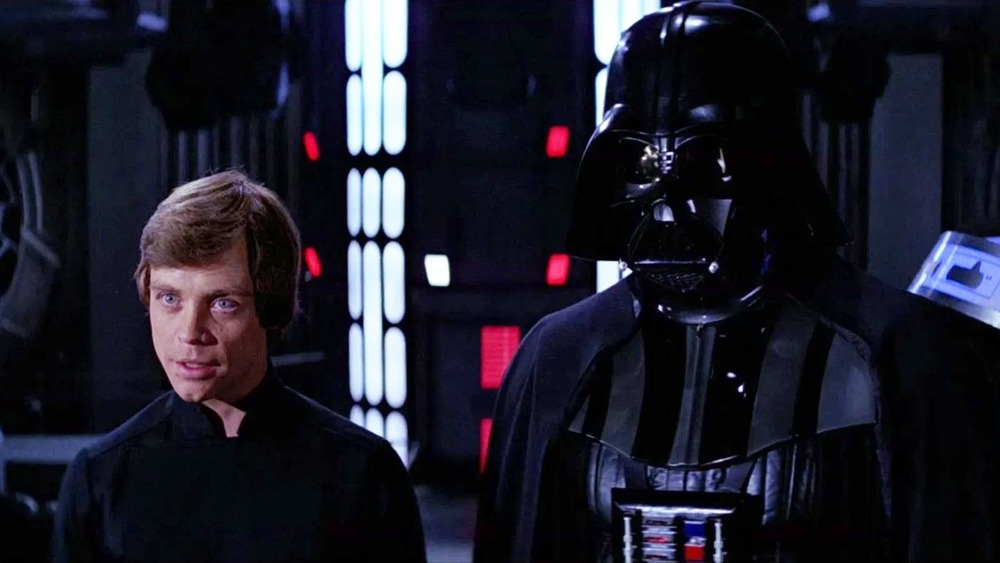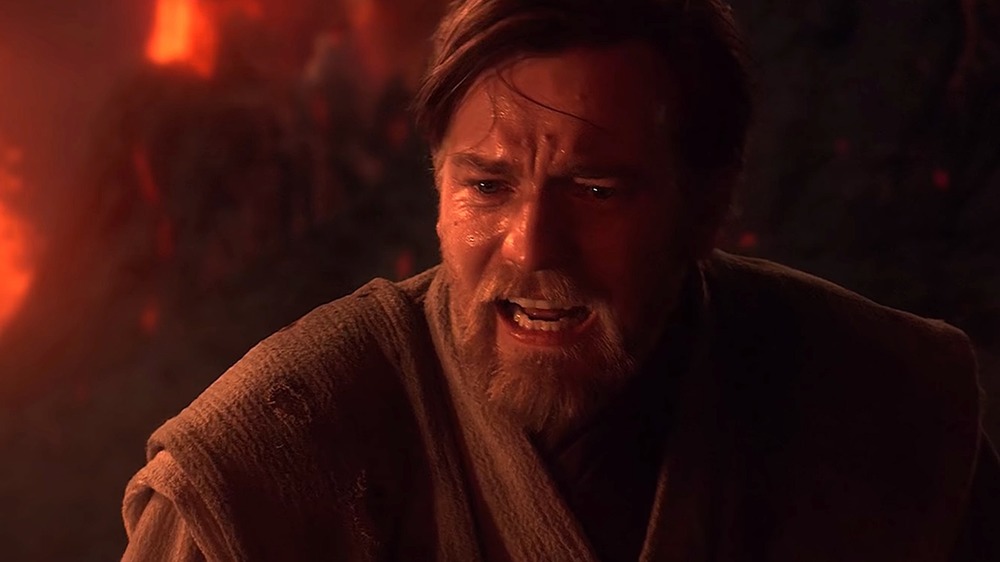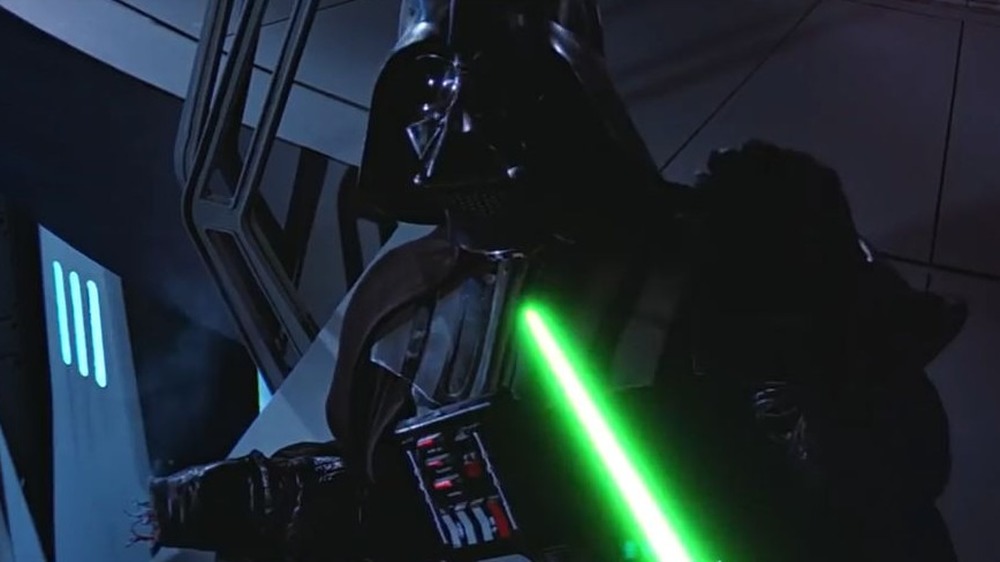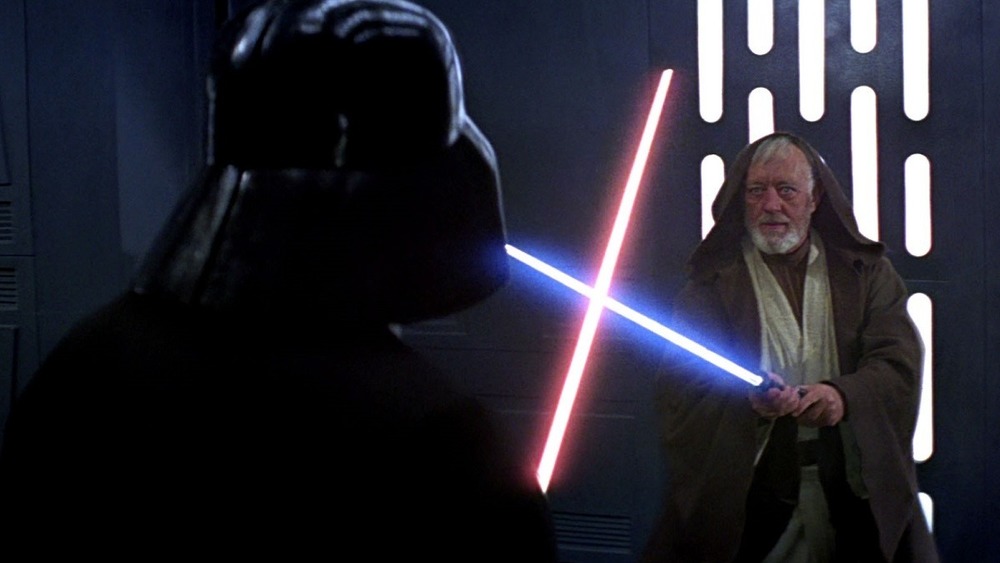Rules Darth Vader Has To Follow In The Star Wars Universe
Few villains are as iconic as Star Wars' Darth Vader. Beginning his life as Anakin Skywalker, this Jedi is seduced to the dark side of the Force by the manipulative Emperor Palpatine. While he ultimately redeems himself in Return of the Jedi, Vader spreads plenty of death and destruction in the meantime — all in the name of "peace and order" in the galaxy.
Part of what makes Darth Vader such a memorable villain is that, for the most part, we know what to expect from him. From his slow mechanical breathing to the arrival of John Williams' unforgettable "Imperial March" whenever he appears, Vader has his trademarks. Though there are many things Palpatine's apprentice can do, entering a scene without being recognized isn't one of them.
For Darth Vader to remain as intimidating a figure as he is in the Star Wars universe, he needs to follow some very specific rules. His film appearances bear this out, whether we're talking about the original trilogy, Skywalker's transformation into Vader in Revenge of the Sith, or even in his relatively brief appearance in 2016's Rogue One: A Star Wars Story. These are the rules Darth Vader always has to follow.
Vader must always find a reason to turn on his lightsaber
We don't get to see Darth Vader engage in a lightsaber duel in every movie, but we sure do get to see it in most. Anakin's duel with Obi-Wan Kenobi in Revenge of the Sith is especially memorable. Then there's the fact that there's hardly anyone he doesn't execute with his lightsaber in the final film of the prequel trilogy: Mace Windu, the Jedi on Coruscant, the younglings, and the Separatist leaders all bite the dust.
The older Obi-Wan's boarding of the Death Star gives Vader a chance for payback in A New Hope. Later, he faces Luke Skywalker in one of the most desperate lightsaber duels of the franchise toward the end of Empire Strikes Back, during which he reveals his parentage to Luke. Finally, there's his defeat at Luke's hands on the second Death Star in Return of the Jedi.
And then, chronologically between the prequels and the original trilogy, there's Rogue One: A Star Wars Story. There aren't any active Jedi around to give Vader a match, but he isn't one to wait for a fair fight. In what ultimately proves to be a futile attempt to get the Death Star plans from the rebels, Vader wields his lightsaber in what is possibly one of the most brutal sequences of any Star Wars film. If your name isn't Darth Vader, you do not want to be in that hallway.
Vader has to Force choke someone
Vader's tendency to Force choke his victims is one of his trademarks. The first time we see him use this terrifying ability is in a meeting aboard the Death Star. When Admiral Motti scoffs at Vader's warnings about the power of the Force, Vader rewards Motti's "lack of faith" by cutting off his air supply with nothing more than the motion of his hand. It's only Grand Moff Tarkin's order that saves the admiral from turning blue.
In Empire Strikes Back, when Admiral Ozzel brings the fleet out of light speed too close to the Hoth System, thereby giving the rebels the chance to detect them, Vader doesn't even need to be in the same room as the admiral to choke the life out of him for his mistake. Later in the same film, it's Captain Needa Vader chokes to death for losing track of the Millennium Falcon. Surprisingly, everyone escapes Vader's invisible chokehold in Return of the Jedi. In a deleted scene, however, he chokes Moff Jerjerrod for barring his way to the Emperor, though he stops once he learns it's on Palpatine's order.
Orson Krennic has the rare treat of surviving a Vader choke in Rogue One, though the rebel soldier the Sith flings across a narrow hallway isn't quite so lucky. Finally, some believe the still-young Vader's choking of Padme contributes to her early death at the end of Revenge of the Sith.
Vader constantly needs to remind people of the power of the Force
Vader's usually the kind of guy who lets his actions speak for him. But when he does speak, he often finds a way to throw in some kind of speech about the power of the dark side, or the Force in general. Before Force choking Admiral Motti in A New Hope, for example, he responds to the admiral's assurances of the Death Star's invulnerability with, "Don't be too proud of this technological terror you've constructed. The ability to destroy a planet is insignificant next to the power of the Force."
In Empire Strikes Back, in between lightsaber strikes, Vader preaches to Luke about the dark side. He urges his son to unleash his anger, claiming it's the only way to defeat him. Just before he reveals his familial connection to Luke, Vader laments, "If you only knew the power of the dark side!" His dialogue in Return of the Jedi is similar. When Luke tries to convince Vader to abandon the emperor, he answers, "You don't know the power of the dark side. I must obey my master." Moments later, he refers to the dark side as the "true nature of the Force."
Vader never misses a chance to ominously look out of a spaceship
Darth Vader can evoke an extraordinary amount of emotion and mood without the benefit of a visible face. One particularly potent way of doing this is that in almost every film in which he appears, there's bound to be a shot of the Sith lord staring out of a spaceship window. It's a small detail, perhaps, but a meaningful one — particularly when you consider we can't even see his eyes.
The very first shot of Vader in Empire Strikes Back, for example, is of the Sith lord from behind, looking out the window of the Executor. Likewise, one of the very last shots of Vader in the film is him on the deck of the same star destroyer looking out the window, turning away moments after the Millenium Falcon's escape. We see a very similar shot in Return of the Jedi after Vader senses Luke on board the shuttle Tydirium and allows their passage to Endor. And then there's the final shot of Vader in Rogue One: He watches from the boarded rebel ship as Leia and her allies escape aboard the Tantive IV, with the dearly paid-for Death Star plans. There's a reason the movies keep using this shot — it's a powerful one.
Vader always treats the Emperor like a living god
When you consider how much suffering Palpatine bestows upon Anakin Skywalker, it's painful to realize just how much and how often Vader treats his master like some kind of god. In Revenge of the Sith, moments after he maims Mace Windu to save Palpatine, he kneels before his new master and pledges his loyalty. While his initial motivation in becoming Darth Vader is to save Padme from death, his treatment of his master as a living god lasts long after his wife's passing.
Speaking in terms of film release, we don't see the Emperor until he appears as a holographic image in Empire Strikes Back. Before he's even on screen, Vader treats him worshipfully: He begins the transmission to Palpatine by kneeling and bowing his head. He greets him kneeling once more in Return of the Jedi when Palpatine arrives on the second Death Star.
Now that we've seen so much more of Anakin Skywalker's story, Vader's humility before Palpatine may not seem very noteworthy. But remember that when audiences sat down for Empire Strikes Back in 1980, they didn't even know Vader was a Skywalker yet. They'd only seen Vader treat people — excepting perhaps Grand Moff Tarkin — in one of two ways: As people he had killed or would kill, or as people he hadn't decided to kill ... yet. To see such a character kneeling and bowing before someone else was jarring.
Vader always has to comment on his son's power
It's probably not very controversial to say that Darth Vader isn't the best dad. But ironically, when it comes to Vader's dialogue regarding Luke, he's always very, well ... affirming. Even when Luke can't hear him, his dad has a lot of complimentary things to say about him, in terms of his connection to the Force and his skills.
In A New Hope, as the spirit of Obi-Wan communicates with Luke during his bombing run on the Death Star, Vader comments, "The Force is strong with this one." Later, when they meet face-to-face for the first time in Empire Strikes Back, Vader announces his presence with, "The Force is with you, young Skywalker, but you are not a Jedi yet." When Luke escapes Vader's attempt to carbon freeze him, the Sith lord comments, "Impressive. Most impressive." After hacking off his hand, Vader speaks of how important Luke is, that he has untapped potential, and that he has the power to destroy the emperor. Likewise, in Return of the Jedi, after Luke turns himself in to Imperial forces, Vader is impressed with his new lightsaber, saying his skills are "complete" and commenting on how powerful he is.
You'd think, for a guy who thinks so highly of his son, he'd swing deadly lightsabers at him a lot less. But such is life as a cybernetic Sith lord with so many burdens.
Vader has to be obsessed with Obi-Wan
Vader is obsessed with Obi-Wan. When Padme confronts him on Mustafar, it's Obi-Wan who Vader blames for her questioning of his actions, rather than, you know, his own crazy actions. When he senses Obi-Wan on the Death Star in A New Hope, rather than try to uncover why the Jedi is there or who he may have brought with him, Vader concerns himself only with killing him. For the rest of the original trilogy, Vader can't stop himself from bringing Obi-Wan up in every confrontation he has with Luke.
Just before tricking Luke into the carbonite chamber in Empire Strikes Back, Vader claims that Obi-Wan knew Luke's "destiny" was with Vader. After Luke escapes, Vader says, "Obi-Wan has taught you well. You have control of your fear." Later, just before making the movie's big reveal, Vader invokes Obi-Wan again, saying he never told Luke what happened to his father.
Later, in Return of the Jedi, shortly after they begin their battle on the Death Star, Vader repeats the line, "Obi-wan has taught you well," though Obi-Wan has been dead for years. Yes, he still appears to Luke as a Force ghost, but none of that involves training, nor do we get any indication Vader knows of Obi-Wan's new existence. Regardless, years after his old master's death, Vader still blames him for every obstacle in his path.
Vader either has to lose a limb, or come very close to doing so
When you're stewing on a grudge, there are always people who will tell you to "let it go." While he's probably not the best example of mental stability in the Star Wars universe, there's at least one way in which Darth Vader has been forced to let things go more than anyone else in the narrative: In most of his appearances, Vader either loses one or more limbs, or comes close to it.
When Vader loses his right prosthetic hand in Return of the Jedi, it's a multifaceted boon to the good guys. Not only does its loss mark Luke Skywalker's victory over the Sith Lord, it reminds Luke of his own replacement hand — and who took it from him. This halts his relentless assault on his father, and stops him from going too far down a dark path. Of course, Obi-Wan takes both of Vader's legs and one of his arms at the end of Revenge of the Sith, prompting Palpatine to fit Vader with a new cybernetic body.
While he doesn't lose any limbs in Empire Strikes Back, he comes pretty close. While Luke loses the battle, he gives his dad a nice whack in the arm with his weapon — good enough to make you wonder exactly how the Sith's arm survived the strike.
Vader can't ever truly win a lightsaber duel
One of the most interesting ironies of Darth Vader's character is how poor his on-screen fight record is, despite his terrifying stature. In every Star Wars film that features a duel between Vader and another Jedi, the Sith either loses the fight, or is deeply confused.
In Return of the Jedi, Luke Skywalker is finally able to defeat his father, spurred on by his anger. In Revenge of the Sith, Vader's defeat at Obi-Wan's hands is decisive and crippling, with Vader losing three of his four limbs and being set on fire by the lava of Mustafar.
While Vader kills Obi-Wan in A New Hope, it's clear he isn't sure of himself. When Obi-Wan disappears completely, allowing his robes to fall empty to the floor, Vader tests the robes with his foot, almost as if he thinks the old Jedi is hiding in the pile of clothes. Again, he defeats Luke at the end of Empire Strikes Back, but nothing seems to confuse him more than Luke's choice to drop into the bowels of Cloud City. He tells his son joining him "is the only way," but Luke, of course, finds another.
